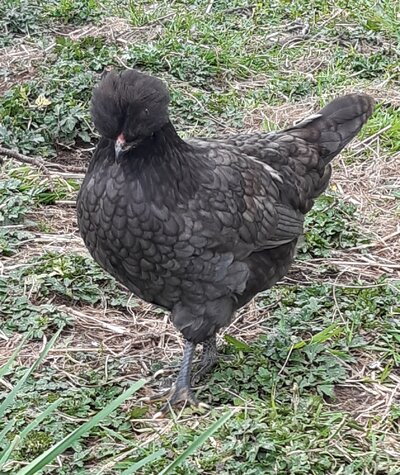BByroo
Songster
- Aug 13, 2021
- 127
- 156
- 121
Ok similar to how the merle and ee works with dogs neatI actually have some examples of this to share.
I have NZ Araucana in Black, Blue and Splash variety.
Recently I discovered that two of my birds also carry recessive white.
So when these two birds are bred there is a chance their babies will get two recessive white genes.
Rooster is plain blue
Hen is plain splash
Their babies (ignoring the white) will be either blue or splash
My understanding is that the recessive white "dilutes" all the colours on the feather to white - so all the other possible gound colours and patterns are still there but simply diluted to white so you don't see them.
So VISUALLY you see no colours, no patterns, only white.
But GENETICALLY they are still either blue or splash (plus white)
So I have a white baby here - let's say it was splash plus recessive white.
If I breed that baby to another splash - I will expect to get splash babies, showing all the usual colours and patterns you should see on splash, and those babies will carry one recessive white gene (hidden because one copy doesn't express visually).





